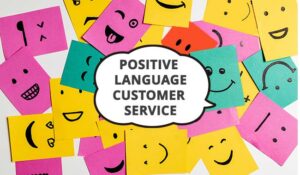Across every industry there’s a clear link between engaged employees and business success. For example, according to Gallup, organisations that have highly engaged employees are 11% more profitable and twice as likely to retain staff compared to rivals.
Essentially more engaged employees are:
- More productive
- More likely to stay
- Less prone to absenteeism
- More innovative
- Perform better and deliver a higher quality service, especially to customers
- Happier, with better wellbeing, greater motivation, and lower stress levels
The employee experience directly impacts engagement levels. In many ways this is obvious. People want to do a good job, and if you provide the right environment, tools and culture, staff are more likely to be happier and give 100% of their potential.
What Challenges Prevent a Great Customer Service Employee Experience?
As the face of your organisation, speaking directly to customers every day, you need to ensure your employees are engaged and motivated. Especially as there is a direct correlation between happy employees and satisfied customers.
However, delivering an engaging experience in the contact centre is complicated by multiple challenges:
- Staff often deal with angry or even abusive customers, day in, day out, impacting the mood of even the sunniest of agents.
- Work is often repetitive and involves following specific processes and procedures.
- Shift-based work patterns can make it hard to build workplace friendships or to develop a strong culture.
- Often agents aren’t provided with easy-to-use tools or technology, forcing them to switch between different applications or frantically search to find relevant information to do their jobs.
- Agents are constantly monitored and measured on their performance, particularly in contact centres that still rely on metrics such as calls handled per hour.
All these factors contribute to poor morale and high attrition rates. According to the ContactBabel UK Contact Centre Decision-Maker’s Guide 2022, the average attrition rate sits at around 23%, with nearly a quarter of contact centres experiencing 30% and above. 9% saw over half their staff leave every year.
Three Ways to Improve the Employee Experience
As well as unhappy customers and high agent attrition rates, poor engagement levels also lead to low productivity, which impacts overall contact centre efficiency. Given these factors, how can organisations improve the employee experience? Focusing on these three broad areas is essential:
1. Listen to Your Staff and Act on Their Insights
The first step to understanding how engaged your people are, and what needs changing in the employee experience, should be to ask them. Run a formal Voice of the Employee (VoE) programme that collects feedback through regular surveys.
Most important, use the insight to drive change. As well as surveying the whole workforce, focus on specific parts of the employee lifecycle (such as new joiners) to see what can be improved on in these areas.
With a VoE programme, it is vital to be clear and transparent, sharing the results and highlighting how their feedback has driven change.
Demonstrating that you are listening and acting upon employee insight is an immensely powerful way of engaging and motivating staff. Cross-referencing VoE and Voice of the Customer feedback can also uncover issues (and solutions) that improve the experience for customers too.
2. Map the Customer Service Employee Experience
Apply the same techniques that you use to understand the customer experience to your employees. Map out their journey, starting with recruitment and onboarding, and ensure that the experience is seamless and simple to navigate.
For example, when they turn up on their first day, is everything in place for them to begin work? Looking at the employee journey and where people leave or become disengaged provides insight into areas you need to improve.
Again, involve employees in the mapping process and in suggesting potential ways of enhancing their journey.
3. Give Them the Tools and Skills They Need
Empower your staff by providing the right working environment, technology and training that enables them to work effectively. Look at the systems they use and ensure that they match their needs.
For example, by providing quick access to knowledge and information and reducing unnecessary administration. If you are introducing new technology, make sure you involve agents to drive faster adoption.
Put in place training to help develop their skills so that they feel they can perform effectively. Consider their working environment, such as noise levels, heating conditions, and break rooms – do they contribute to a positive experience? Finally, understand your culture and ensure it is positive and supportive.
Given the direct link between EX and CX, it is vital that organisations listen to their employees and provide the experience that they are looking for. Otherwise, staff will become disengaged, unproductive, and ultimately leave, adding to costs and impacting your service levels.
Following the pandemic, we’re now seeing unprecedented levels of employee churn across every industry and type of job. Therefore, act now to ensure you retain your staff and their skills to drive success.
This blog post has been re-published by kind permission of Enghouse Interactive – View the Original Article
For more information about Enghouse Interactive - visit the Enghouse Interactive Website
Call Centre Helper is not responsible for the content of these guest blog posts. The opinions expressed in this article are those of the author, and do not necessarily reflect those of Call Centre Helper.
Author: Enghouse Interactive
Published On: 23rd May 2022 - Last modified: 31st May 2022
Read more about - Guest Blogs, Enghouse Interactive






 Enghouse Interactive delivers technology and expertise to help bring your customers closer to your business through its wide range of customer contact solutions.
Enghouse Interactive delivers technology and expertise to help bring your customers closer to your business through its wide range of customer contact solutions. 








